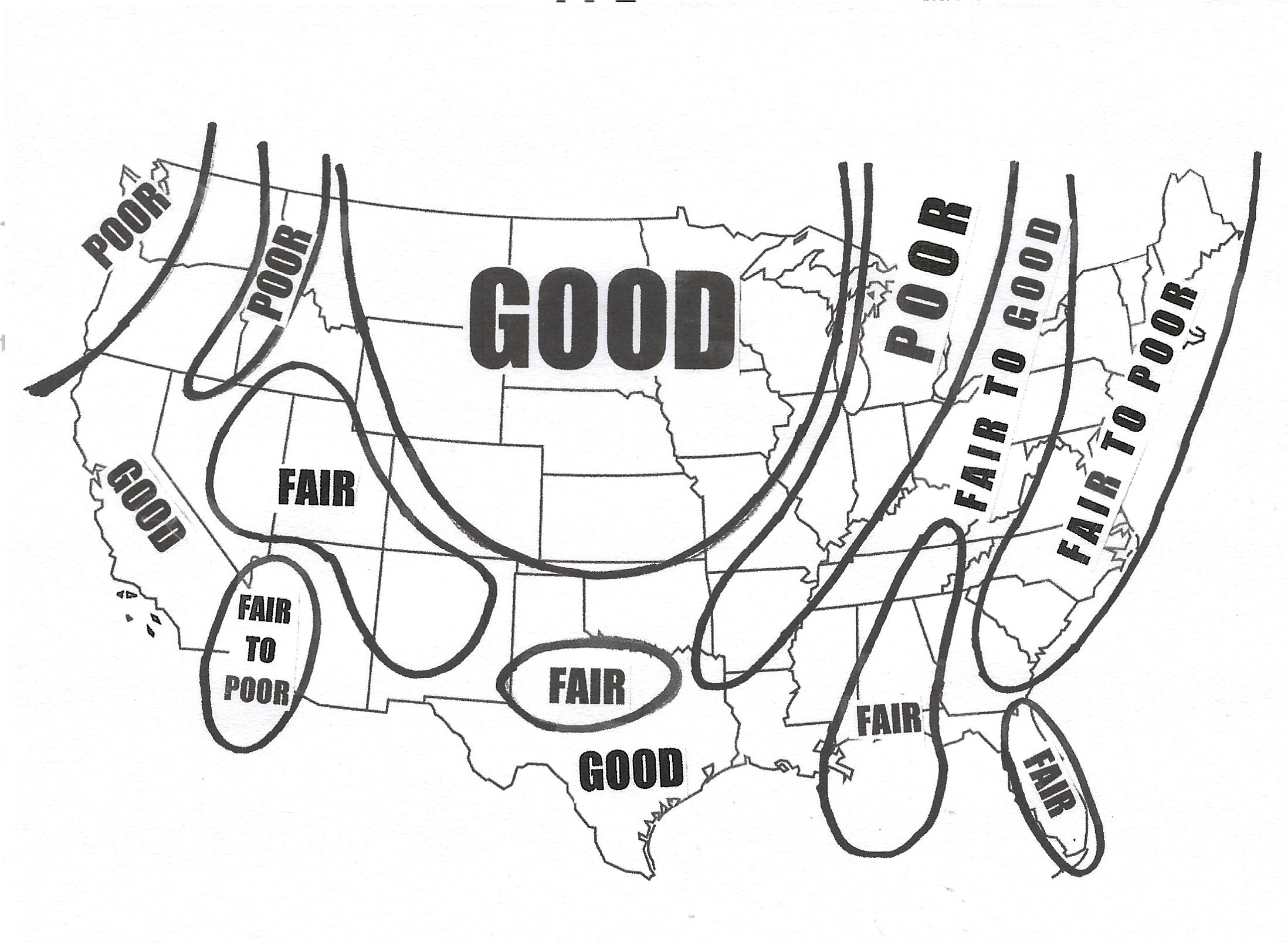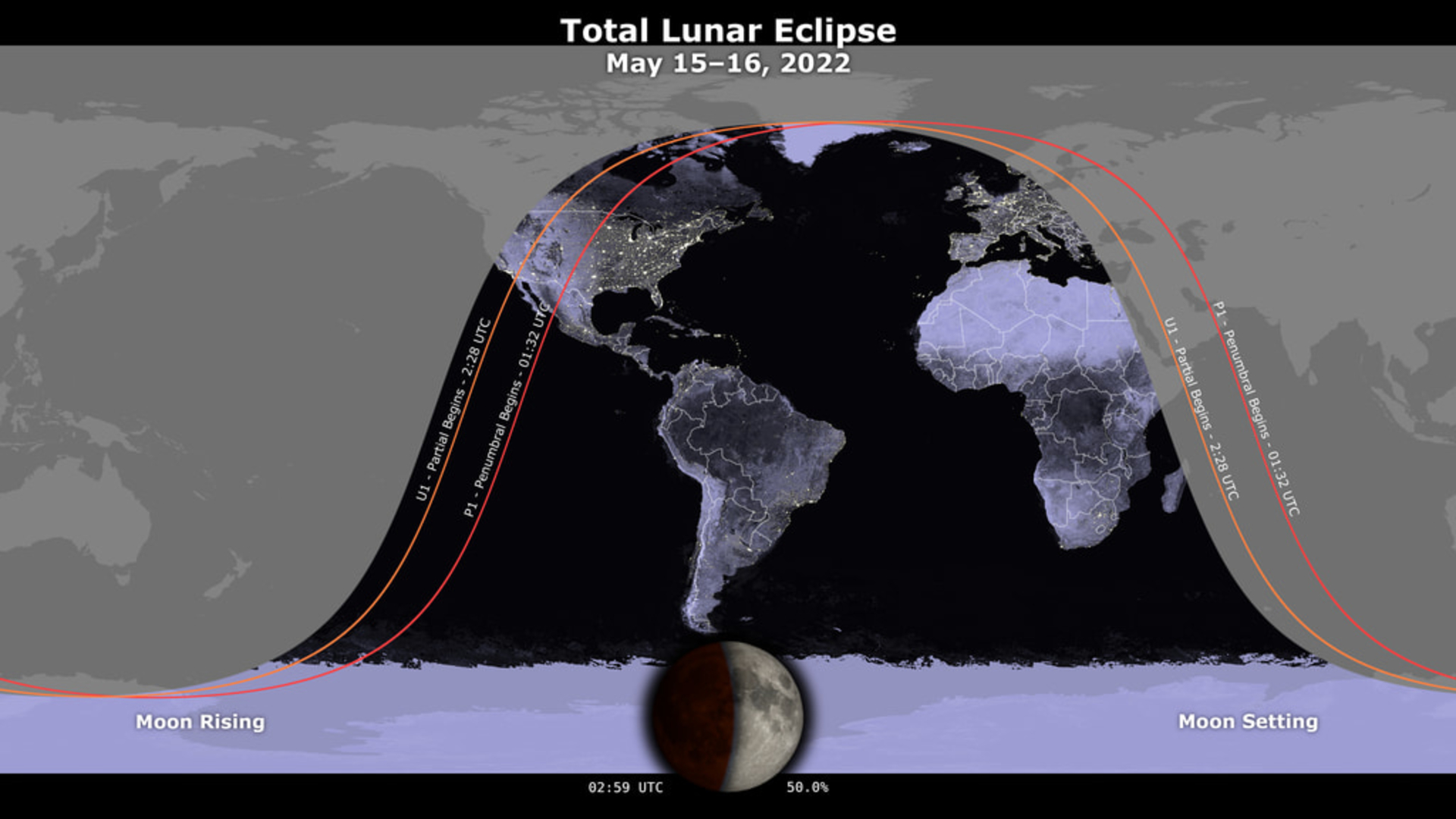A total eclipse of the moon will occur tonight (May 15) and if you're looking for the best weather conditions the event, we suggest heading to the Northern and Central Great Plains where mainly clear skies will prevail through the entire celestial show.

Looking for a telescope for the next lunar eclipse? We recommend the Celestron Astro Fi 102 as the top pick in our best beginner's telescope guide.
Elsewhere around the country, the weather will be problematic in varying degrees for the lunar eclipse, which is the first of 2022 and is also known as the Super Flower Blood Moon of May. (That's because it's the Full Flower Moon and is happening while the moon is at its closest to the Earth or the month, making it a so-called supermoon.)
If you end up with bad weather, you can watch the Super Flower Blood Moon eclipse online and enjoy views of the full moon from around the world where the skies may be clearer. The eclipse will begin at 10:28 p.m. EDT (0228 GMT on May 16), reach its Blood Moon peak at 12:11 a.m. EDT (0411 GMT) on May 16 and then end at 1:55 a.m. EDT (0555 GMT).
Related: What time is the Super Flower Blood Moon eclipse?
Super Flower Blood Moon weather in the US

Thanks to a cold front, the region that has the greatest chance of getting completely shut out of getting even a brief glimpse of tonight's shady celestial drama on the moon will be around the Southern Great Lakes. That includes the big cities of Chicago and Detroit, and extending southwest within a band encompassing much of Indiana, the southern and eastern half of Illinois, southeast Missouri and much of the state of Arkansas. There's also a slight risk of severe thunderstorms across this entire region as well.
Along the heavily populated Atlantic Seaboard, from Maine south to the Florida Peninsula, the weather will be at the mercy of convective clouds and showers.
Sunday afternoon sunshine will warm a humid and unstable atmosphere, creating a build-up of clouds, "pop-up" showers and thunderstorms. After sundown, the air will cool and the showers will diminish and end. The cloudiness will slowly dissipate, but unfortunately perhaps not quickly enough to allow views of the eclipsing moon. We'll allow for the possibility of some occasional breaks for some locations; thus, not a complete shutout, but what could be categorized as fair-to-poor conditions.
Get the Space.com Newsletter
Breaking space news, the latest updates on rocket launches, skywatching events and more!
Related: The stages of the Super Flower Blood Moon of 2022 explained
Western states offer good lunar eclipse weather

Most places west of the Mississippi should be in good shape for eclipse watching with a few localized exceptions: western portions of Washington and Oregon where widespread low clouds will be prevalent.
A narrow strip of overcast skies will be present over northern and western Idaho where there could be a few localized showers and thunderstorms, and an anomaly: partly to mostly cloudy skies over the normally cloud-free region of southwest Arizona and a slice of southeast California. Prospective eclipse watchers situated right along California's Pacific Coast would be advised to head inland to avoid the marine layer which could spill ocean clouds from the ocean after dark.
The moon could play hide-and-seek with a swath of mid-to-high level cloudiness over portions of the central and southern Rockies and northern Texas.
Finally, on a somewhat positive note, there could be a corridor of clear to partly cloudy skies extending south from western New York through the Ohio Valley.
Related: Super Flower Blood Moon lunar eclipse the 1st of 4 supermoons?
Our weather map above shows the chances of clear skies for the eclipse, graded on a three-point scale: Good, Fair and Poor.
Of course, we stress that our National Outlook is only a generalization — a "broad-brush look" at sky conditions from coast to coast. For a more detailed and localized outlook, we suggest checking the latest updated forecast from your local National Weather Service office. Here is link to the National Weather Service Organization page that lists all of the Weather Service Forecast Offices across the United States, including Alaska, Hawaii and the Pacific Region. Just click on the office that serves your area to get not only the latest weather outlook, but access to local radar and satellite imagery as well.
If you're clouded-out of tonight's eclipse, you won't have to wait long for a second chance. Our next opportunity to see another total lunar eclipse will come later this year during the morning hours of Nov. 8.
We wish one and all good luck, and clear skies!
If you're hoping to photograph the moon, be sure to read our best cameras for astrophotography and best lenses for astrophotography. Our guides on how to photograph a lunar eclipse, as well as how to photograph the moon with a camera, for some helpful tips to plan out your lunar photo session.
Editor's Note: If you snap an amazing lunar eclipse photo (or your own eclipse webcast) and would like to share it with Space.com's readers, send your photo(s), comments, and your name and location to spacephotos@space.com.
Joe Rao serves as an instructor and guest lecturer at New York's Hayden Planetarium. He writes about astronomy for Natural History magazine, the Farmers' Almanac and other publications. Follow us on Twitter @Spacedotcom and on Facebook.
Join our Space Forums to keep talking space on the latest missions, night sky and more! And if you have a news tip, correction or comment, let us know at: community@space.com.

Joe Rao is Space.com's skywatching columnist, as well as a veteran meteorologist and eclipse chaser who also serves as an instructor and guest lecturer at New York's Hayden Planetarium. He writes about astronomy for Natural History magazine, Sky & Telescope and other publications. Joe is an 8-time Emmy-nominated meteorologist who served the Putnam Valley region of New York for over 21 years. You can find him on Twitter and YouTube tracking lunar and solar eclipses, meteor showers and more. To find out Joe's latest project, visit him on Twitter.









